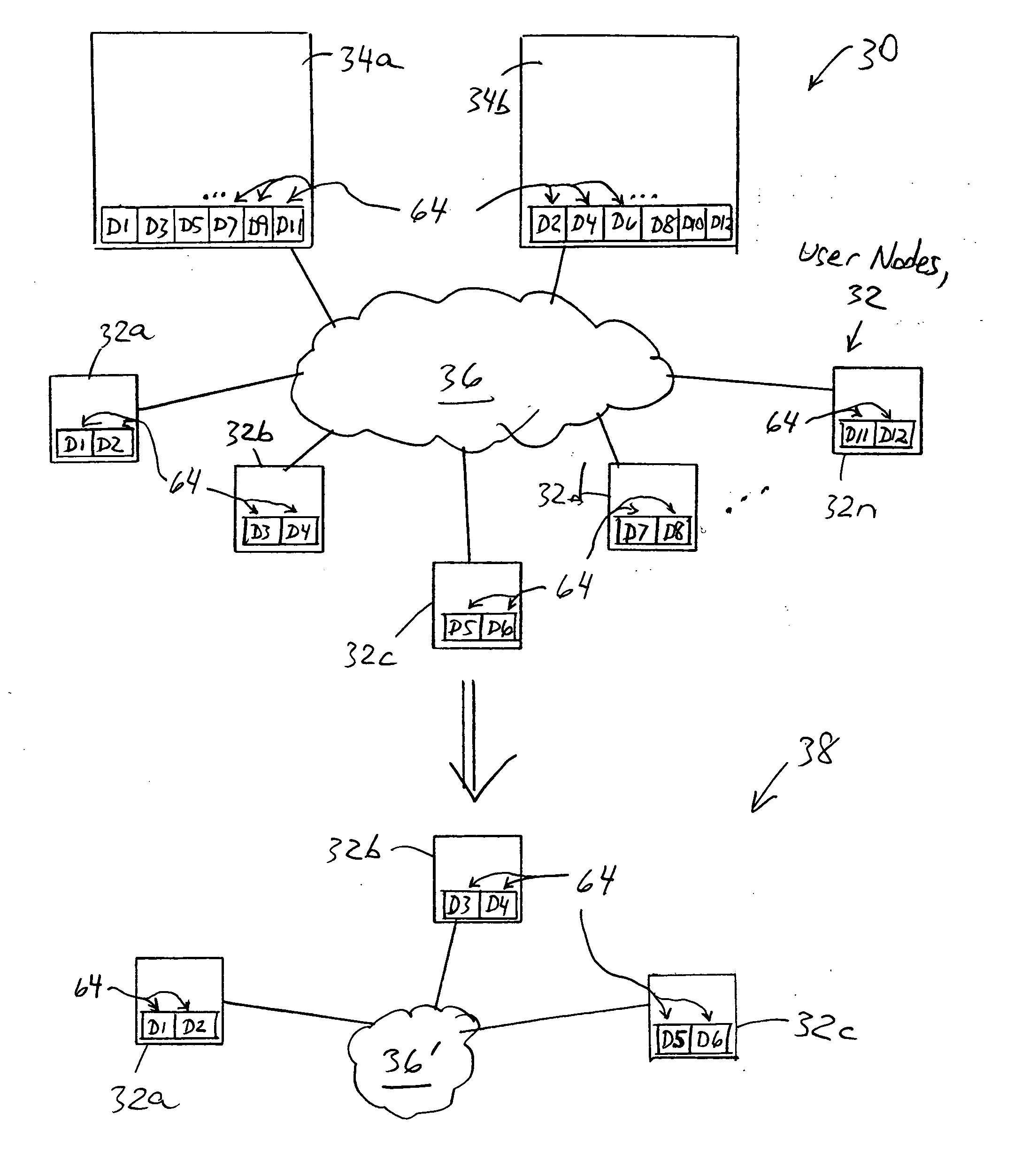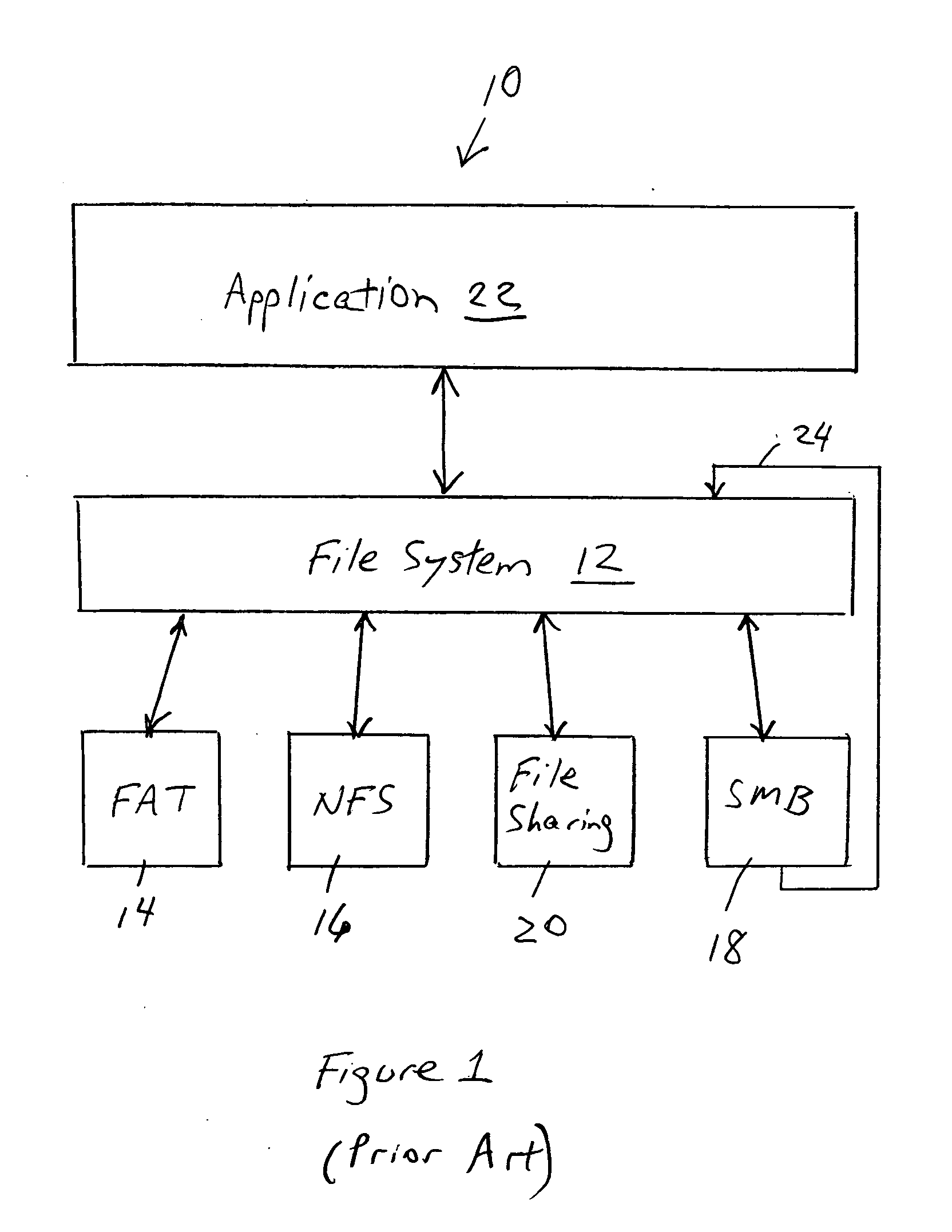Arrangement for recovery of data by network nodes based on retrieval of encoded data distributed among the network nodes
a network node and encoded data technology, applied in the field of distributed storage of data, can solve the problems of inefficient storage and retrieval techniques, disk space, time constraints, and inability to efficiently implement r-replication in ad hoc or unreliable networks, and achieve the effect of reducing the cost of r-replication
- Summary
- Abstract
- Description
- Claims
- Application Information
AI Technical Summary
Benefits of technology
Problems solved by technology
Method used
Image
Examples
Embodiment Construction
[0033] The disclosed embodiment employs a network having a distributed services network architecture that enables distributed network nodes to provide distributed services. In particular, the distributed network services architecture is based on implementing a distributed storage system for the distributed storage of data objects, and a distributed file system that enables mapping of namespaces (i.e., fully qualified names of respective data files) to unique object identifiers that identify respective data objects, based on the unique object identifiers having values independent of any storage location.
[0034] The disclosed embodiment exploits the inherent portability of personal computers (e.g., laptop computers) in order to implement the distributed network nodes described herein. Consequently, a distributed network node implemented as a laptop computer can continue to provide access to distributed services and access to distributed data objects having been locally stored on the l...
PUM
 Login to View More
Login to View More Abstract
Description
Claims
Application Information
 Login to View More
Login to View More - R&D
- Intellectual Property
- Life Sciences
- Materials
- Tech Scout
- Unparalleled Data Quality
- Higher Quality Content
- 60% Fewer Hallucinations
Browse by: Latest US Patents, China's latest patents, Technical Efficacy Thesaurus, Application Domain, Technology Topic, Popular Technical Reports.
© 2025 PatSnap. All rights reserved.Legal|Privacy policy|Modern Slavery Act Transparency Statement|Sitemap|About US| Contact US: help@patsnap.com



